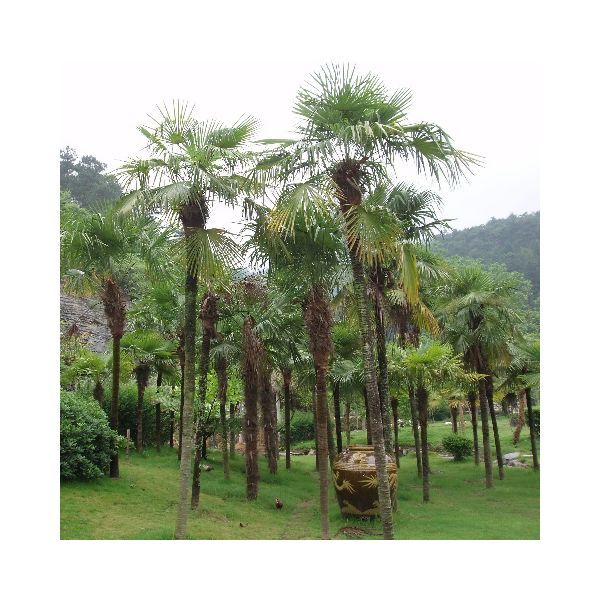Trachycarpus Fortunei Seeds (Windmill Palm, Chusan Palm)
Trachycarpus Fortunei Seeds (Windmill Palm, Chusan Palm)
There is nothing quite like the shimmy of the foliage of this species on a windy winter day!

Delivery
All orders shipped with UPS Express.
Always free shipping for orders over US $250.
All orders are shipped with a UPS tracking number.
Returns
Items returned within 14 days of their original shipment date in same as new condition will be eligible for a full refund or store credit.
Refunds will be charged back to the original form of payment used for purchase.
Customer is responsible for shipping charges when making returns and shipping/handling fees of original purchase is non-refundable.
All sale items are final purchases.
Help
Give us a shout if you have any other questions and/or concerns.
Email: contact@domain.com
Phone: +1 (23) 456 789
Availability: In stock
SKU
Trachycarpus Fortunei
Trachycarpus fortunei is also commonly called Windmill palm, Chusan palm, or Chinese fan palm is native to temperate and subtropical mountainous areas of Asia including southeastern China, Taiwan and the Chusan Islands. It is beautifully compact and grows to heights of 20-40 ft (6.1-12.2 m).
Windmill palm has a rather slender single stem that is 8-10 in (20-25 cm) in diameter and is typically a bit narrower at the base than at the top. They are held on thin 3 ft (0.9 m) flattened stems that are finely toothed along both edges. Trunks are usually covered with a loose mat of coarse gray or brown fiber. In older individuals the fiber sloughs away to reveal a remarkable dark, bristly petiolated trunk.
There is nothing quite like the shimmy of the foliage of this species on a windy winter day! Chusan palm has light to dark green palmate leaves that are lighter, almost silvery (glaucous), on the underside. Leaves are circular, about 3 ft (0.9 m) in diameter and segmented about halfway. They are flat with leaf segment tips held stiffly, but occasionally you will see individuals with droopy tips.
Male and female flowers are borne on separate plants (so this palm is said to be dioecious). They are densely arranged on 2-3 ft (0.6-0.9 m) long branched stalks called an inflorescence. The windmill palm's bright yellow inflorescence erupts from a packet-like bud in late winter and early spring and is held within the crown. On female plants the flowers are followed in late summer by round or oblong blue fruits that are about 1/2 in (1.3 cm) in diameter, and are kidney shaped.
Hardiness zones: 7-11 (-15øC/ 5øF, 4øC/40øF) in winter. This is a hardy palm and can withstand subfreezing temperatures. In its native habitat, this tough palm is sometimes subjected to a cover of snow and ice. Windmill palm is one of the most, cold hardy palms available, down to -15C. Specimens grown in full sun and/or under poor conditions may have much smaller, more compact crowns. Note that this plant should be planted in sheltered sites when grown in Zone 7. In colder climates this plant is a good potted plant.
Windmill palm does best in well drained soils with above average fertility but it will survive in almost anything except perpetually soggy conditions. It is moderately salt tolerant and can be planted behind the first line dunes or against a structure that will shield it from direct exposure to sea breezes. This palm prefers to grow in partial shade. Adequate moisture makes for rapid growth and best appearance but it is amazingly drought tolerant as well (although plants will appear stunted and growth rate dramatically slowed if regular watering is withheld).
| Common name | Chusan Palm, Windmill Palm |
|---|---|
| Species | Trachycarpus fortunei |
| Germination | Sow Trachycarpus fortunei seeds on the surface of a moist peaty seed sowing mix at about 15øC. The seeds will only germinate with light. Trachycarpus fortunei seeds will usually germinate in 40-90 days, but even under good conditions germination may be erratic. Germination can take longer. Be patient! |
| Price View | Price Range |

